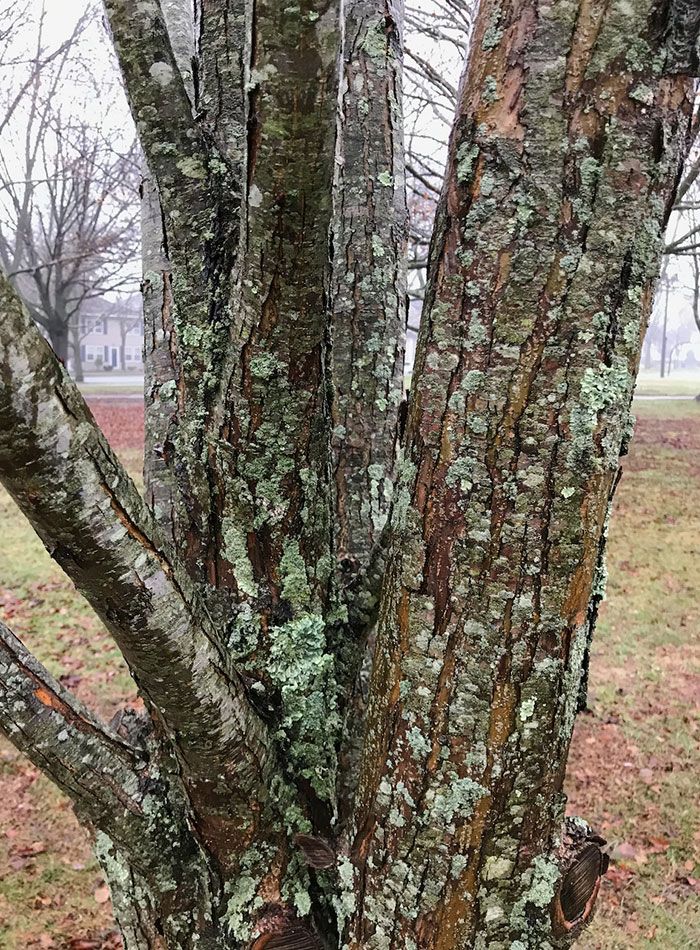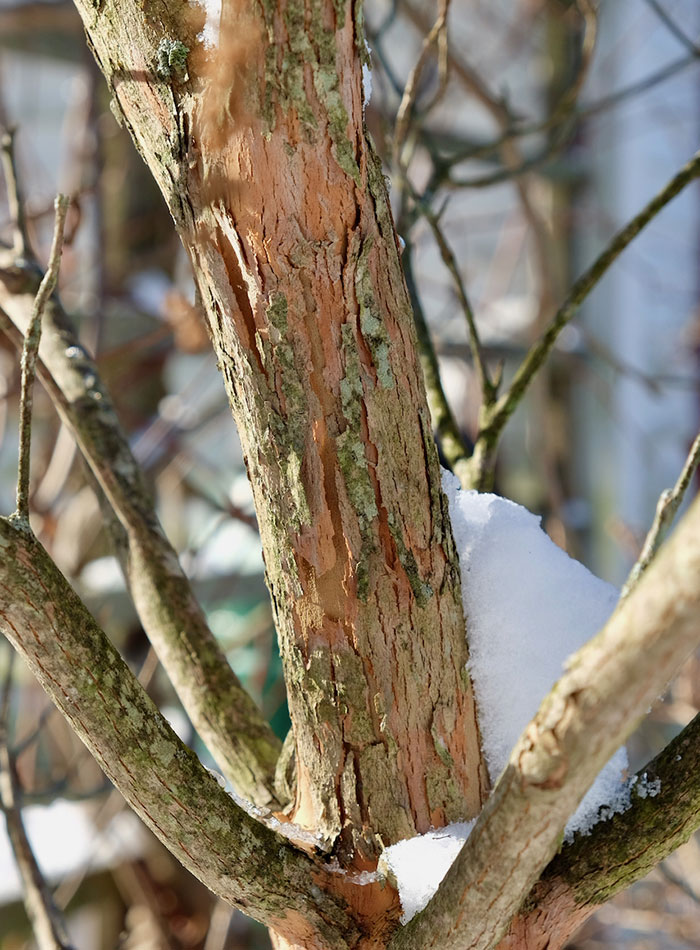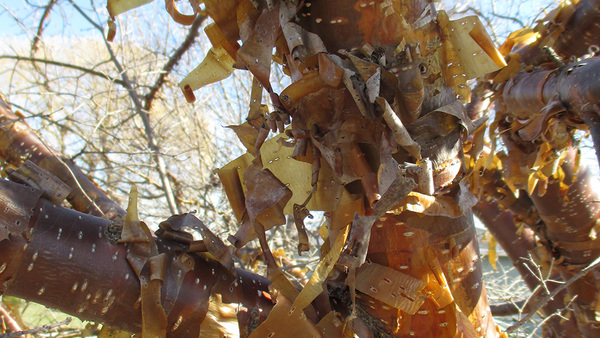
Come winter, when gardens go quiet in the Northeast, most of us become so hard up for visual stimulation that we finally get excited about tree bark. Now that our eyes have adjusted to winter, trees’ designer hues and bark patterns are more noticeable, and even thrilling.

It’s easy to fall for exfoliating bark. Only gardeners in the northernmost reaches of our region with consistently wet soil can grow the classic native paperbark birch (Betula papyrifera, Zones 2–6). The rest of us enjoy the wild pink peels of river birch (B. nigra, Zones 4–9), a multitrunked native tree that is tolerant of heat, humidity, and drought.

Another standout, paperbark maple (Acer griseum, Zones 4–8) displays elegant copper curls and is perfectly sized for small gardens with consistently moist soil. The same is true of Japanese stewartia (Stewartia pseudocamellia, Zones 5–8), which is coveted as much for its multicolored puzzle-piece bark as its early summer camellia-like flowers. Japanese clethra (Clethra barbinervis, Zones 5–8) is an even smaller tree with midsummer racemes of pollinator-magnet flowers and delicately shedding silver-over-pink bark. All grow in full sun to partial shade.

Mushrooms found on or around trees can indicate poor health, but it’s OK to like lichen. The bright green blotches and tufts of this opportunistic composite organism (an alga and fungus team) take up benign and decorous residence on trunks, branches, and other stable surfaces that get plenty of light. Lichen is an effect of defoliation and disease, not the cause. It also can’t tolerate air pollution, so wherever you see it on trees, rocks, and fenceposts, breathe easy.

When you add trees to your garden, design with winter in mind: even “boring” bark will look more interesting against contrasting textures and colors. Always site trees in optimal sun and soil for the species, and plant them at the proper depth. (See more on how to plant a balled and burlapped tree.) When trees are young and their bark is smooth and thin, they are particularly vulnerable to damage from clumsiness and well-intentioned interference. Keep lawnmowers and string trimmers away, and just say no to volcano mulching or any other treatment that blocks light and air. Nongardeners might think we’re nuts for geeking out about bark, but trees’ lives depend on our appreciation for the crucial role it plays.
—Kristin Green is the author of Plantiful: Start Small, Grow Big With 150 Plants That Spread, Self-sow, and Overwinter. She gardens in Bristol, Rhode Island.


















Comments
Log in or create an account to post a comment.
Sign up Log in